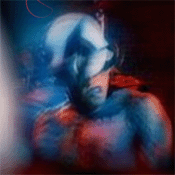webwork 1
urban.early sunday morning_raw,
by Agricola de COLOGNE (Germany), 2002
 "Metropolis: sunday morning, between open end and twilight, between hope and resignation, between following a dream and returning that night to the home town or village outside.
"Metropolis: sunday morning, between open end and twilight, between hope and resignation, between following a dream and returning that night to the home town or village outside.
Coming from the disco, full of the impressions of that juicy girl or that horny boy, doubtful of whether preserving innocence or following the instinct for an outstanding erotic adventure.
It is the moment of not yet knowing, vacillating between yes or no.
It is a same ritual each week-end, even if decisions are made once.
It is a game between identifying and identity.
The work describes the urban landscape as a scenario of a play, where the protagonists are embedded in without any chance to escape.
The work is developed according the principle of SAMAC (Simultaneous Associative Media Art Composing) which describes Agricola’s individual way of experimental electronic writing: words, sound, images, animation, music and voice performance are developed simultaneously –depending on each other – in one long single process."1
Its title already conveys its form and substance: the place and time, the city, early Sunday morning; and then subject and style, raw, live and real; all of it filtered through the Web: urban.early sunday morning_raw looks like a URL.
Agricola de Cologne chose to locate the project in a major train station - Stazione Centrale in Milan, Italy -, an emblematic locus of availability and permissiveness characteristic of urban space2, a thoroughfare at once inside and outside the city, a place of transition, where all encounters, all stories, all novels are possible.1 For in this place city-dwellers originating from here or elsewhere become, if only for a short time, simply passengers, travellers, strangers, nomads. Indeed, he shows us this station at night's end, when Saturday slowly creeps into Sunday. Yet, as the artist points out in his synopsis of the work, this weird moment at the end of the party (more or less) is as transitory as this venue. In this it is magical and special: for it is the moment hovering "between yes and no," all the more suited to play, role-playing, and fiction.
The visitor is immediately greeted by a rhythmical, insistent music accompanying a female soul singer (like echoes drifting out of a dance club late party-goers might just have left) - the music lasts for the duration of the soundtrack -, while letters composing the title unfold in an animated jumble.
Image fragments then appear, rapidly assembling and complementing each other to form a larger image, somewhat blurred and changing, with lots of jittery superimpositions marking the passage - the streaming - of time.
A character emerges who immediately catches our eye: rather ambiguous, costumed and partly hidden by a strange head piece. At once, the impression (and anticipation) of a game, an unfolding scene or announcement of a scene, settles in the mind of the visitor now become a voyeur.
At the same time, the artist's voice is heard, in counterpoint to the constant flow of blending, overlapping images - close-up of a woman's face, people passing through the station, end-of-night street-life, passing headlights, etc. - and sounds - both of the music and of the station. The monotone voice recites what seems to be less a coherent commentary than a hard-to-hear series of words and phrase-fragments that we sometimes make out nevertheless. The voice gains strength, however, and evolves into a more finished recitation, like that of an inspired poet or prophet, the accompanying music reduced to a steady beat. Words, written this time, appear at the bottom of the screen - see, feel, . . .
Lastly, the work lingers on a final image: a couple kissing, in the top left corner of the screen, passengers still making their way toward the station escalators, to the right, and, on the bottom and top, intermittently appearing, what looks like a landscape seen through the window of a moving train.
All this winds up producing not so much a stream of consciousness as a "stream of sensations," gathering, for a magical, playful moment, on the small scene that is the Web, a collection of fleeting impressions and visions, emotions and desires as real and as elusive as (city) life itself.

Notes
1 : Synopsis written in English by the artist, cf. www.nmartproject.net/agricola/mpc/volume6/urban.html 
2 : As urban sociologist Richard Sennett argues in several of his texts - in the following passage, for instance:
"[Cities] have the potential to make us more complex human beings. A city is a place where people can learn to live with strangers, to enter into the experiences and interests of unfamiliar lives. Sameness stultifies the mind; diversity stimulates and expands it.
The city can allow people to develop a richer, more complex sense of themselves. They are not just bankers or roadsweepers, Afro-Caribbeans or Anglo-Saxons, speakers of English or of Spanish, bourgeois or proletarian: they can be some or all of these things, and more. They are not subject to a fixed scheme of identity. People can develop multiple images of their identities, knowing that who they are shifts, depending upon whom they are with. That is the power of strangeness: freedom from arbitrary definition and identification. [...]
In public, city dwellers may don an impassive mask, act cool and indifferent to others on the street; but in private, they can be aroused by these strange contacts, their certainties shaken by the presence of others."
Richard Sennett, "A flexible city of strangers",
in Le Monde diplomatique, February 2001. 
Anne-Marie Boisvert
(Translated from French by Ron Ross)

 top top
 back back
|
